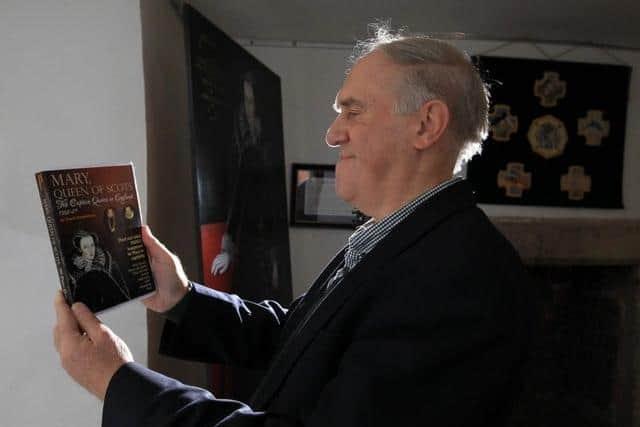'Making Sheffield:' Learn the truth about Mary Queen of Scots 14 year imprisonment in Sheffield


“They thought they could lock her away in the north and she’d be forgotten about, but Mary never stopped being a thorn in Elizabeth’s side,” says Sheffield historian David Templeman, author of ‘Mary Queen of Scots: The Captive Queen in England 1568-87.’
“She would never just lie down and fade into the background.
Advertisement
Hide AdAdvertisement
Hide Ad“She sent more than 2,000 letters whilst in captivity, begging for help from allies in England, France and Spain, and they’re just the letters we know about - she smuggled out countless more in the headdresses of her ladies in waiting, and even in the heels of their shoes.”
In this weekend’s episode of The Star’s new heritage and history podcast, ‘Making Sheffield,’ David explores in detail the truth behind Mary’s time in Sheffield, lifting the lid on how she spent her days at Sheffield Manor Lodge, and the fortress that was Sheffield Castle.
Exactly 450 years on from Mary’s arrival in the city, David reveals how George Talbot, the 6th Earl of Shrewsbury, was required to keep her ‘in the manner of a queen’ out of his own pocket, Mary’s many escape attempts, and the spy network that eventually led to the desperate monarch’s death.
“It staggers people to think she was in Sheffield for such a long time, and people are always curious about what her time here was like,” says David.
Advertisement
Hide AdAdvertisement
Hide Ad“I never intended to write a book, but there was so little information available that eventually I decided I had to write something that would fill this distinct gap in the history of our country.
“People imagine her locked away in some tower room, but in reality, her life here wasn’t actually that bad.
“Elizabeth insisted Mary have a royal court with her, and so she had a staff of around 40-50 people that included cooks, ladies-in-waiting and doctors – and all totally separate to the Shrewsbury household, so poor Shrewsbury ended up paying for two households, which very nearly sent him bankrupt.
“Mary enjoyed all the fixtures and fittings of a queen, including 16-course meals four times a day.”
Advertisement
Hide AdAdvertisement
Hide AdThat’s not to say – David is quick to emphasise – that Mary’s life in Sheffield was easy.
"Of course it wasn’t, she was still a prisoner,” says David.
"Mary was a young woman when she arrived here, who loved music and dancing, and was a keen archer and sportswoman, who could play tennis and ride horses better than most of the men.
"I’m sure it was very tough to be kept in one place, locked away from the rest of the world, for so many years.”
Advertisement
Hide AdAdvertisement
Hide Ad‘Making Sheffield’ immortalises the moments that have shaped the steel city; celebrating key events and locations in its history, and paying tribute to some of the trials it has weathered and survived.
In this weekly series, we invite you, our listeners, on a journey to discover more about the historic foundations our city is built upon.
Listen to ‘Making Sheffield’ now – available on all major platforms.